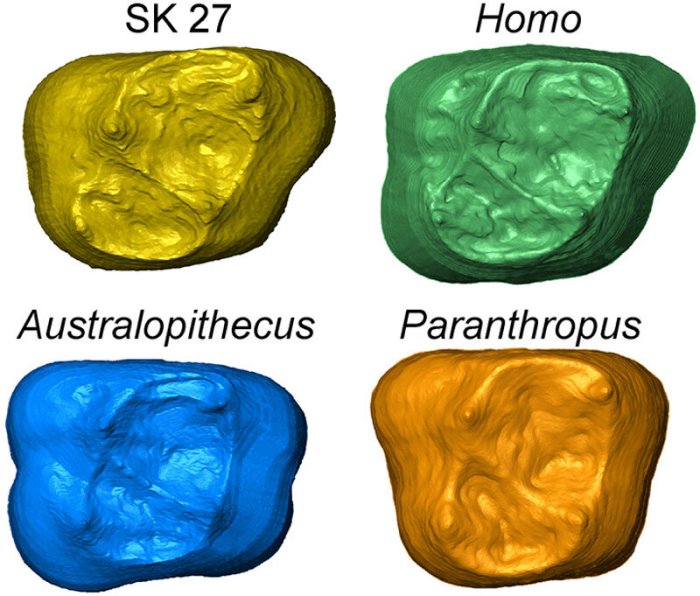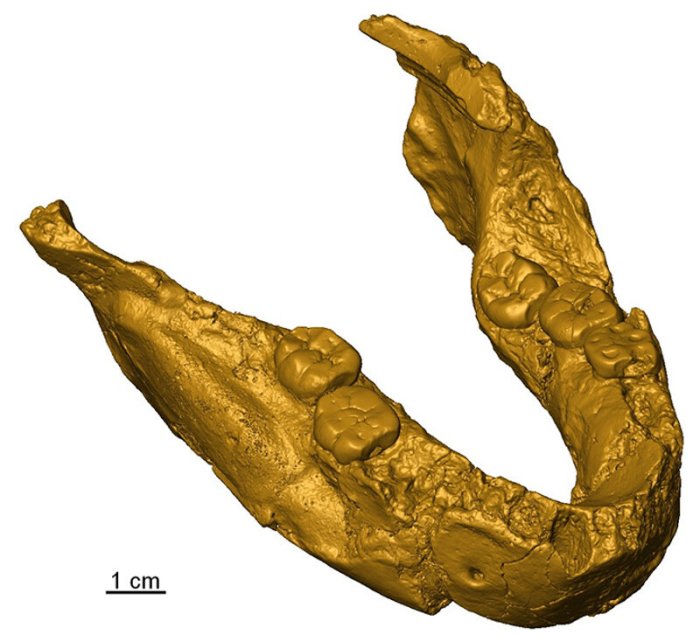Conny Waters – AncientPages.com – Fossil tooth analysis by Southern Cross University geochemist Dr. Renaud Joannes-Boyau has played a central role in an international collaboration that has properly identified the earliest humans.

Figure 1: geometric morphometric analyses of the enamel-dentine junction. Credit: Southern Cross University
The new study, published in the journal Proceedings of the National Academy of Sciences, demonstrates that among the 23 specimens analyzed and potentially representing early Homo from southern Africa between 2.5 and 1.4 million years, a maximum of seven of them actually represent Homo, while the others more likely belong to Australopithecus or Paranthropus.
These results have direct implications regarding our interpretations of hominin diversity, paleobiology and ultimately on our understanding of human evolution.
Dr. Renaud Joannes-Boyau used specialist equipment, located at Southern Cross University’s Lismore campus, to detect lactation behavior based on geochemical analysis of tooth fossils.
The origins and the biogeographic diversity of the earliest members of genus Homo remain a major topic in paleoanthropology.
These results highlight the importance of correctly identifying the taxon to which a fossil belongs. Otherwise, any misattribution to the genus Homo whereas it represents in fact Australopithecus or Paranthropus would completely bias interpretations on paleobiological aspects, like for example dietary behavior, ecological interactions, hominin paleodiversity, adaptations and evolutionary relationships.
Properly identifying the earliest representatives of our genus Homo is crucial to understand when, where, and how our genus emerged on the African continent. However, there is no consensual definition of the genus Homo, which leads to unending debates regarding the identification of early Homo.

Figure 2: mandible SK 15 is most likely related to Paranthropus and not Homo. Credit: Southern Cross University
In southern Africa, early Homo remains have been described in several sites (Sterkfontein, Swartkrans, Kromdraai, Drimolen), in geological levels dated between 2.5 and 1.4 million years ago. Some of these specimens were also regarded as potentially representing Australopithecus and/or Paranthropus, complicating the taxonomic attribution of these fossils. These uncertainties preclude any reliable ᴀssessment of hominin paleodiversity, as well as the evolutionary relationships between Homo, Australopithecus and Paranthropus, eventually obscuring conditions of emergence of Homo.
Dr. Renaud Joannes-Boyau was part of an international team of researchers whose comprehensive revision of the southern African Early Pleistocene dental remains attributed to early Homo showed that many specimens were misattributed.
This study is based on geometric morphometric analyses of the enamel-dentine junction (Figure 1), an internal structure of the teeth that has been showed to be a reliable taxonomic proxy to distinguish hominid species up to the sub-species level.
“It is exciting when new techniques, such as microtomography, allow us to extract new and valuable information from fossils that have been in our collections for decades,” said Professor Matthew Skinner from the University of Kent.
As a result, among the 23 purported Homo specimens, only four of them (SK 27, SK 847, SKX 21204 and Sts 9) are statistically classified as Homo, and three others preserving more primitive features (StW 80-81, SE 1508 et StW 669) also possibly belong to the human genus.
All the other specimens more likely represent Australopithecus or Paranthropus.
One of the most emblematic remains of southern African paleoanthropology is the mandible SK 15 (Figure 2) that was attributed to Homo erectus for decades, and demonstrated in this study to be more likely related to Paranthropus.
“These quanтιтative analyses of the enamel-dentine junction shape allowed us to objectively re-evaluate the taxonomy of a number of purported Homo specimens, while also revealing a larger paleodiversity of hominins than previously accepted,” said Dr. Clément Zanolli, CNRS researcher at the University of Bordeaux.
Geochemical analyses and elemental mapping were also conducted on two purported early Homo specimens from southern Africa. Both of them were shown to represent more likely Australopithecus (SKX 268) and Paranthropus (KB 5223) using geometric morphometric analyses and interestingly the geochemical signal corroborates these results.
In particular, SKX 268 displays a weaning signal comparable to that reported in Australopithecus and different from what we know in Homo.
“Lactation behavior of early hominin, which has been advanced as a versatile adaptive trait to survive challenging ecological niches, could be one of the key features distinguishing Homo from the other hominins,” said Dr. Renaud Joannes-Boyau from Southern Cross University.
Dr. Joannes-Boyau explained the confusion around the three genus is because Homo, Australopithecus and Paranthropus were all living at the same time in the same area of southern Africa.
“Australopithecus is likely the ancestor of both Homo and Paranthropus,” he said.
“The variation is very minimal between the two but there are some important changes that happens with Homo that makes us so successful that we evolved to over-compete and overtake all the different species.
“Geochemical analysis of the anatomy indicates there is nothing fundamentally different between the genus so it must be something in the behavior of Homo that allowed the earliest humans to advance.”
Paper
Written by Conny Waters – AncientPages.com Staff Writer





